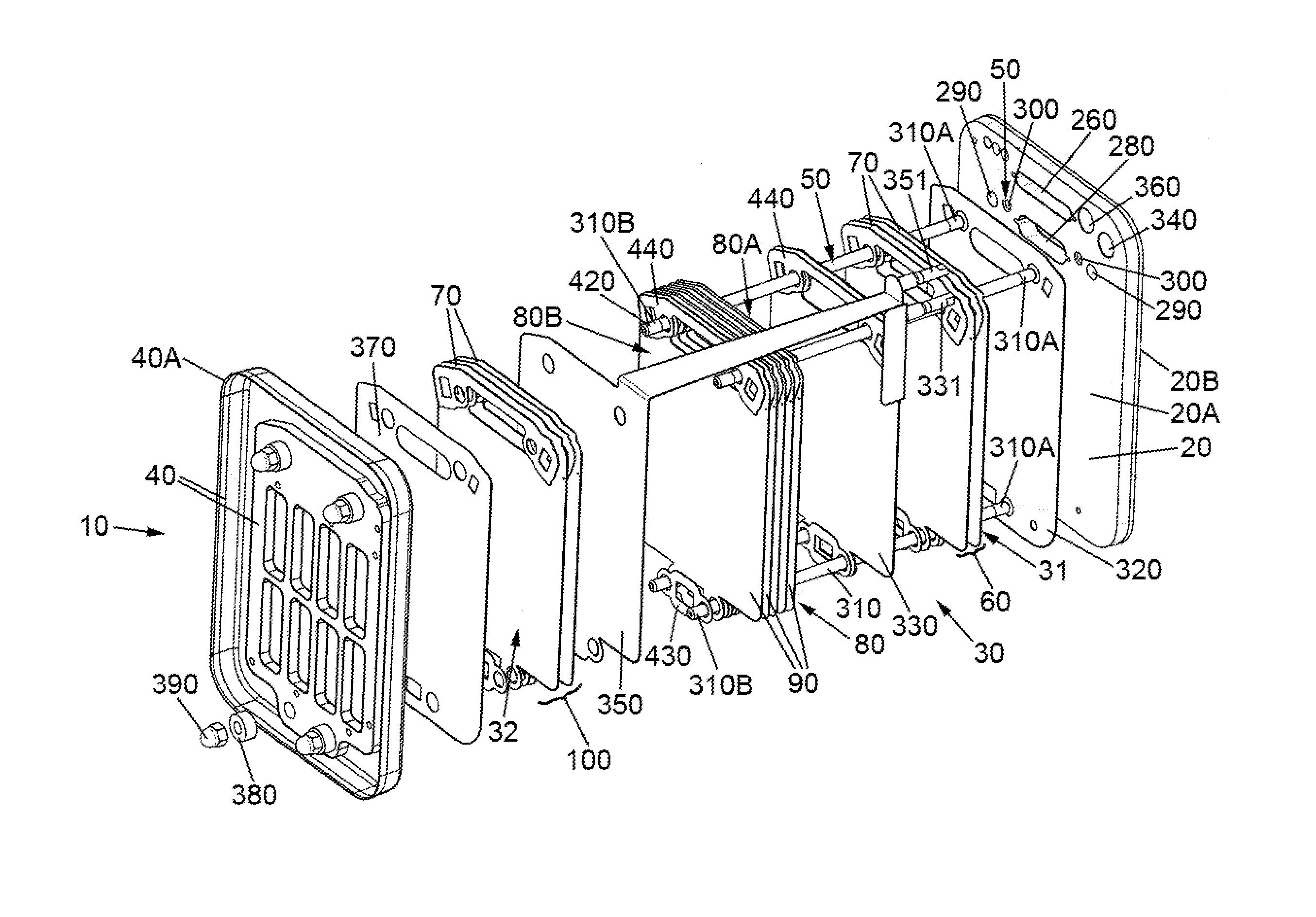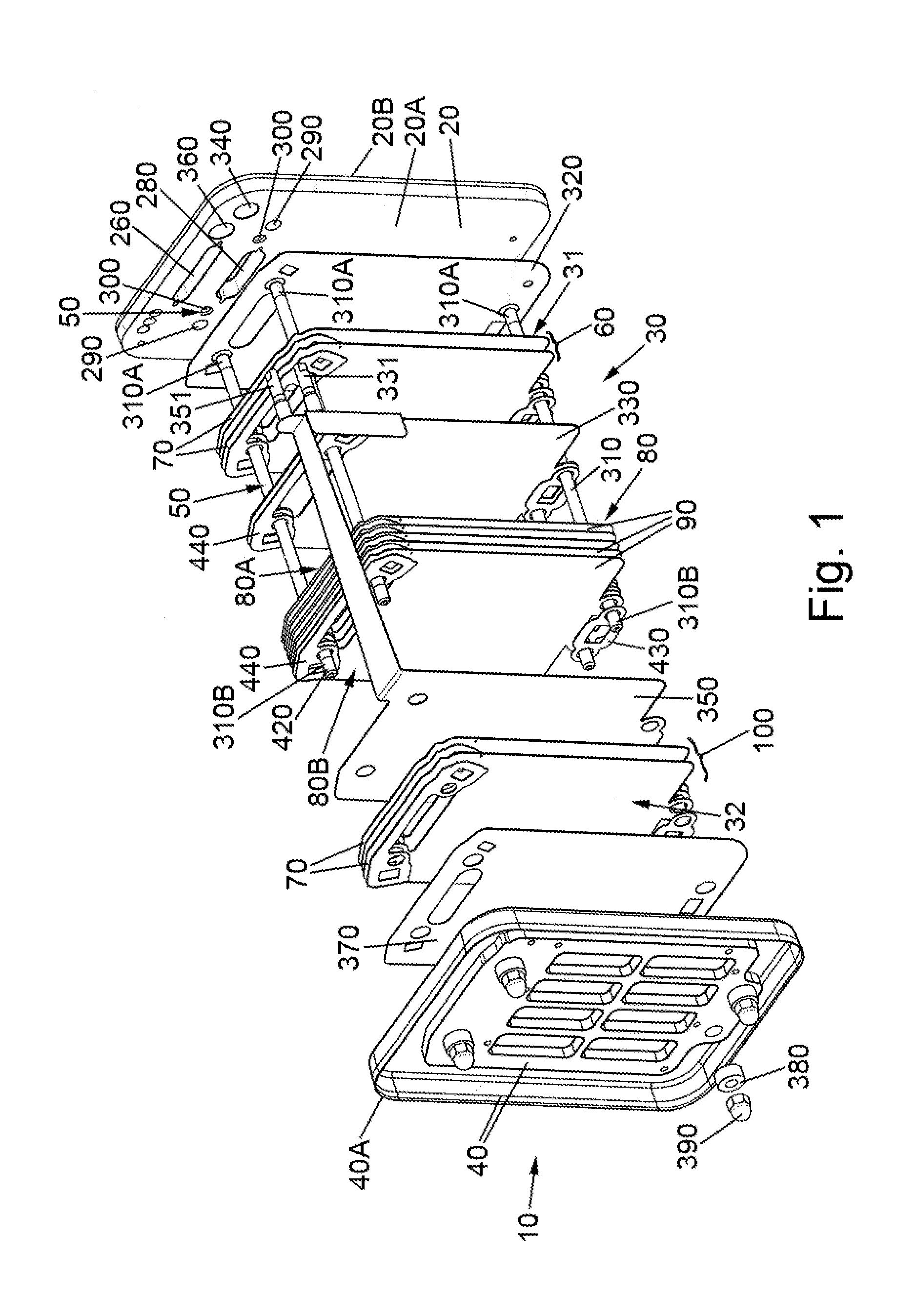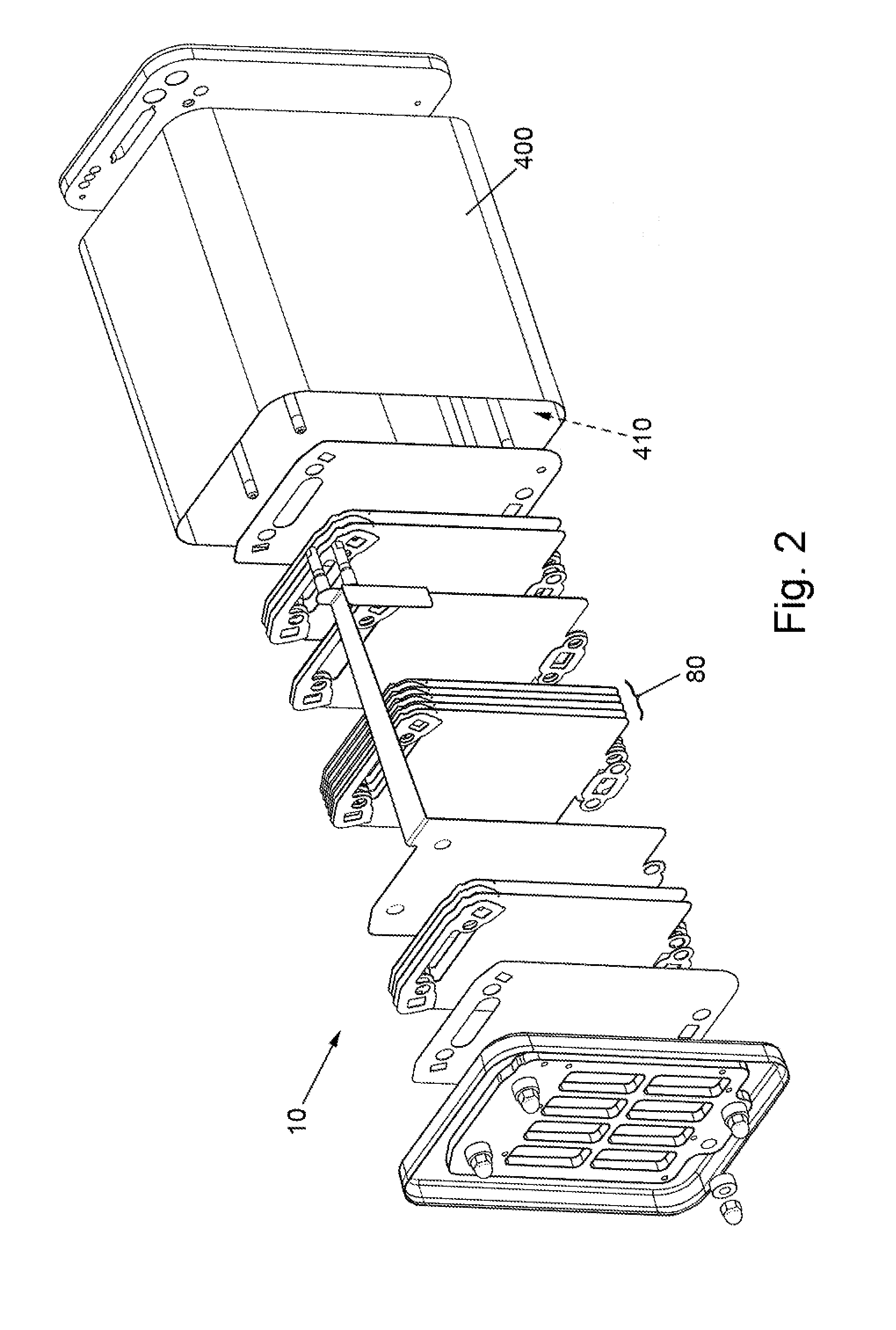Fuel Cell Stack Arrangement
- Summary
- Abstract
- Description
- Claims
- Application Information
AI Technical Summary
Benefits of technology
Problems solved by technology
Method used
Image
Examples
example 1
[0262]In order to determine the effect of the incorporation of electrochemically inactive fuel cell stack repeat layers in a fuel cell stack assembly, comparative data was obtained from first and second intermediate-temperature solid oxide fuel cell stack assemblies.
[0263]The first intermediate-temperature solid oxide fuel cell stack assembly (referred to as being “With buffer inactive layers”) is a fuel cell stack assembly as per Embodiment 1 (above).
[0264]The second intermediate-temperature solid oxide fuel cell stack assembly (referred to as being “Without buffer inactive layers”) is identical to the first intermediate-temperature solid oxide fuel cell stack assembly except that it does not include any electrochemically inactive fuel cell stack repeat layers, i.e. does not include a first set of electrochemically inactive fuel cell stack repeat layers, and does not include a second set of electrochemically inactive fuel cell stack repeat layers.
[0265]In the experiments, both stac...
PUM
 Login to View More
Login to View More Abstract
Description
Claims
Application Information
 Login to View More
Login to View More - R&D
- Intellectual Property
- Life Sciences
- Materials
- Tech Scout
- Unparalleled Data Quality
- Higher Quality Content
- 60% Fewer Hallucinations
Browse by: Latest US Patents, China's latest patents, Technical Efficacy Thesaurus, Application Domain, Technology Topic, Popular Technical Reports.
© 2025 PatSnap. All rights reserved.Legal|Privacy policy|Modern Slavery Act Transparency Statement|Sitemap|About US| Contact US: help@patsnap.com



